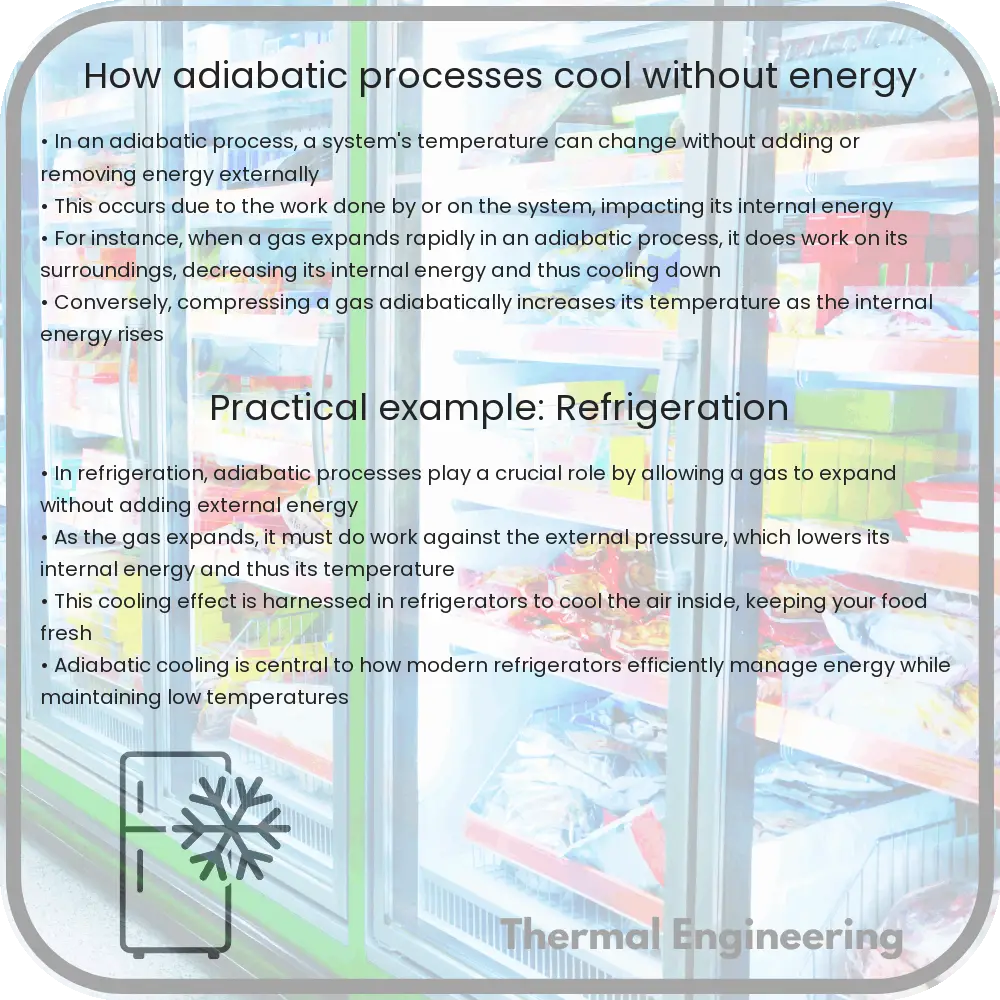Explore the principles of adiabatic cooling, a key thermodynamic process used in industries like air conditioning and meteorology for energy-efficient temperature regulation.

Understanding Adiabatic Cooling: A Look into Energy-Free Temperature Reduction
Adiabatic cooling is a thermodynamic process in which a fluid’s temperature decreases without any heat being transferred into or out of the fluid system. This concept is pivotal in both natural phenomena and various engineering applications, such as air conditioning, gas compression, and even meteorology. To grasp how adiabatic cooling works, we must first delve into the basics of what ‘adiabatic’ means and how these processes function in practical scenarios.
What Does Adiabatic Mean?
In thermodynamic terms, an adiabatic process is one where no heat is transferred into or out of a system, signified by Q = 0, where Q represents the heat exchange. This can occur either because the system is thermally insulated, preventing heat exchange with its surroundings, or because the process happens too quickly for any heat transfer to take place. In both scenarios, any change in temperature of the system must arise from work done by or on the system rather than from external heating or cooling.
How Does Adiabatic Cooling Occur?
Adiabatic cooling occurs when a gas expands. According to the first law of thermodynamics, the energy within a closed system must remain constant if no heat is transferred. This law can be mathematically expressed as:
ΔU = Q – W
where ΔU is the change in internal energy of the gas, Q is the heat added to the system, and W is the work done by the system. In an adiabatic process, Q = 0, so the equation simplifies to:
ΔU = -W
When a gas expands adiabatically, it does work on its surroundings. This work comes from its internal energy, which leads to a decrease in temperature. The exact relationship between pressure, volume, and temperature in an ideal gas undergoing an adiabatic process is given by the following equation:
PVγ = constant
where P is the pressure, V is the volume, and γ (gamma) is the heat capacity ratio (Cp/Cv, the ratio of heat capacity at constant pressure to heat capacity at constant volume).
Examples of Adiabatic Cooling in Engineering and Nature
- Refrigeration Cycles: Modern refrigerators and air conditioners use a controlled adiabatic process in the expansion valve, where the refrigerant expands and cools before absorbing heat from the interior of the refrigerator or the room.
- Gas Compression and Turbines: In gas turbine engines, the compression stage is typically adiabatic. The compressed air heats up as it is compressed by doing work on it.
- Cloud Formation: As moist air rises in the atmosphere, it expands due to lower atmospheric pressure at higher altitudes, leading to adiabatic cooling, which can cause water vapor to condense and form clouds.
Significance of Adiabatic Cooling
Adiabatic cooling is an essential principle in thermodynamics that exemplifies how physical systems can regulate temperature and undergo phase changes without external heat exchange. Understanding this process is fundamental for designing efficient cooling systems and for predicting weather patterns. In a broader context, it enhances our comprehension of energy conservation and the behavior of gases under varying pressures and volumes.
By harnessing the principles of adiabatic cooling, engineers can devise more efficient systems while also contributing to sustainable practices in technology and environmental management.